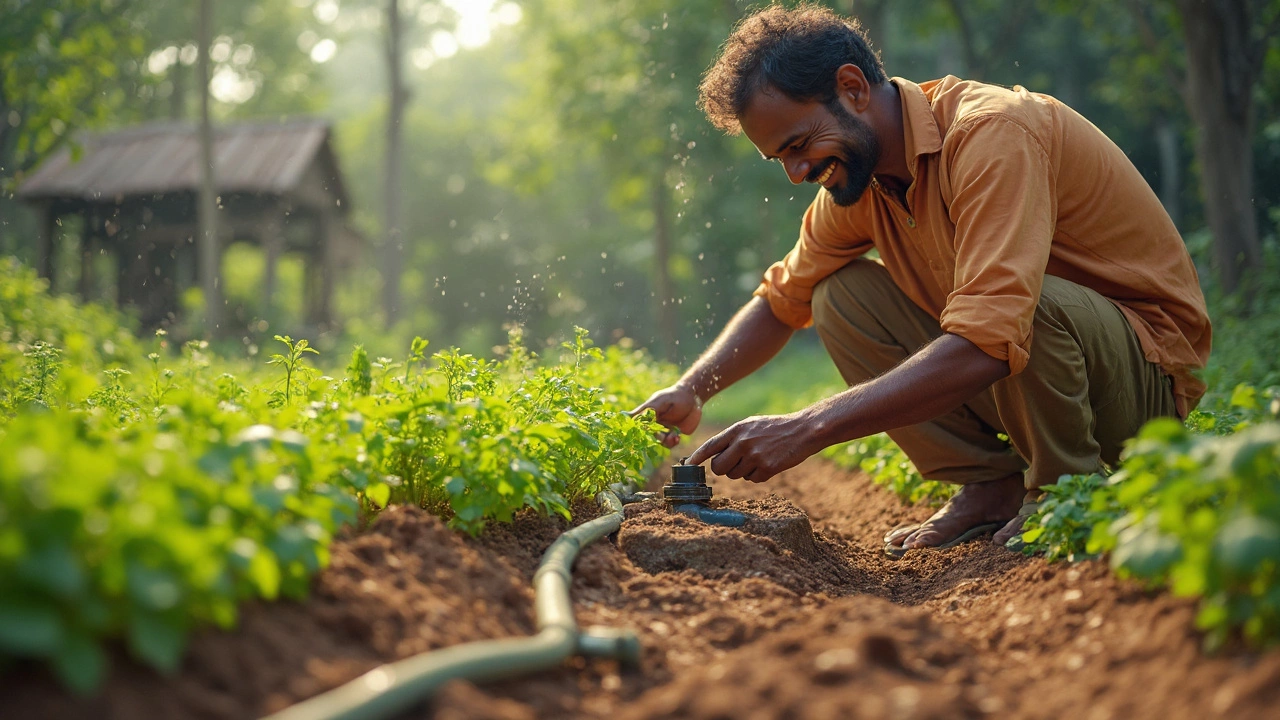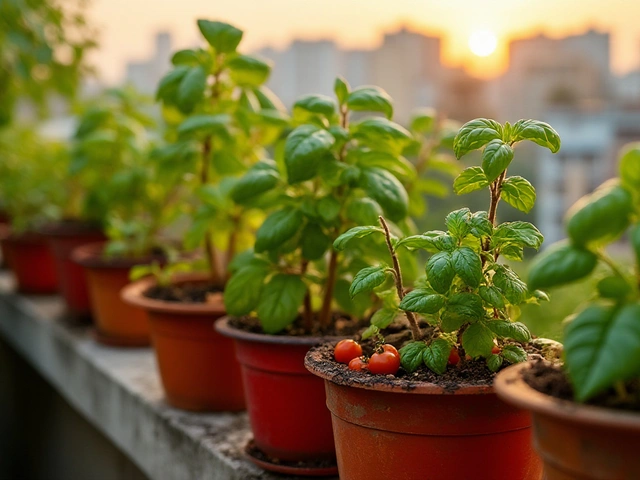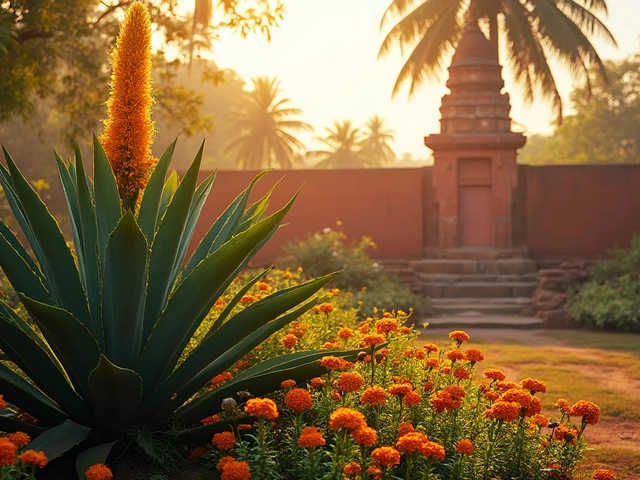Ever wondered why some gardeners swear by putting their drip irrigation systems under a layer of mulch? This trick might be the secret to healthier plants while saving some extra bucks on that water bill. It's like giving your garden a water-conserving blanket, and really, who wouldn't want that?
When you place a drip irrigation system under mulch, you're not just being fancy. This combo works wonders by reducing water evaporation and keeping roots nice and moist. Let's face it, no one wants to see their garden parched under the blazing sun. Using mulch can also prevent weeds from taking over, and we all know how annoying those can be.
Whether you're a seasoned gardener or just dipping your toes into this whole plant-growing thing, knowing how to set up drip irrigation under mulch can make a world of difference. So, why not give it a shot and see if this approach helps your plants flourish?
- Why Combine Drip Irrigation with Mulch?
- Benefits for Your Plants
- Practical Installation Tips
- Common Pitfalls to Avoid
Why Combine Drip Irrigation with Mulch?
Mixing drip irrigation with mulch is like giving your garden double the love. This pairing offers a bunch of perks that can keep your plants thriving and your water usage in check. But why exactly should you bother?
First off, putting your drip lines under mulch helps in cutting water loss. Bare soil tends to let water evaporate into thin air—kind of a waste, right? But with a layer of mulch, the moisture stays where it belongs: nourishing your plants. A lot of savvy gardeners agree. Marjorie Harris, a noted gardening expert, once said,
"Mulch and drip irrigation together are a gardener’s best bet for water conservation and soil health."
Another biggie? Temperature control. Mulch works like a natural thermostat, keeping the soil cool in summer and warmer in winter. Your plant roots will thank you for not having to deal with those crazy temperature swings. This combo also keeps the weeds at bay. Less competition means your plants get all the goodies they need.
And here's some interesting numbers. A study shows that gardens using drip irrigation under mulch can use up to 50% less water than those without. That's like saving gallons of water while still getting lush greenery!
Overall, if you’re looking for an efficient gardening approach that tackles multiple problems at once, nesting your drip irrigation system beneath mulch could just do the trick. It's like putting your plants on a well-balanced diet without extra effort.
Benefits for Your Plants
Using drip irrigation under mulch can feel like a game-changer for your garden. Imagine this: less water wasted, healthier soil, and thriving plants all around—that’s what this combo can offer.
First off, one of the biggest perks is water efficiency. When your drip irrigation system sits beneath a mulch layer, water goes right where it's needed—at the roots. This cuts down on evaporation, so you're doing your bit for water conservation and your plants enjoy a steady drink.
Mulching combined with drip lines also keeps soil temperatures stable. When the sun is blazing, mulch acts like a protective blanket, keeping the roots cool, and when it’s cooler outside, it traps the warmth. Your plants get a more stable environment to grow instead of facing the harsh reality of extreme temps.
Speaking of the soil, there’s more good news. Mulch breaks down over time, adding humus and all those nutrients into the soil, which improves soil structure. Healthy soil is like giving your plants a big leg up. Plus, when water from drip lines seeps in, nutrients are carried right down to the root zone. A win-win!
Got annoying weeds? Placing drip irrigation under mulch helps tackle this by blocking sunlight from reaching the pesky intruders. Lesser weeding time for you means more time to chill or, dare we say, plant more?
If that’s not convincing enough, consider this little nugget: Healthy, well-watered plants are generally more resistant to pests and diseases. When you're maintaining an even moisture level with drip systems under mulch, plants are less likely to succumb to stress-related issues.
To wrap it up, placing your drip irrigation under mulch isn’t just about saving water—it's about fostering a thriving ecosystem right in your backyard. Worth giving it a shot, don't you think?

Practical Installation Tips
Setting up your drip irrigation under mulch might sound like a hassle, but it's actually pretty straightforward. First things first, you need to gather your tools and materials. Grab your drip irrigation kit, some mulch, maybe a shovel, and get ready to transform your garden.
Start by planning your layout. Sketch out where your plants need watering the most. Remember, strategic placement of your drip lines will ensure every plant gets its share of water. Then, make sure you have a water source close by or install a reliable one.
Time to get dirty! Lay down your drip lines. If you're not sure how far apart they should be, about 12-18 inches is a good rule of thumb for general planting needs. Try to keep your lines as straight as possible to avoid kinks. Nothing's worse than water getting stuck halfway!
- Test the System: Once everything's laid out, run the system to check for any leaks or blockages. Fix them before going underground.
- Adjust Emitters: Most drip systems come with adjustable emitters. Set them according to your plants' water needs. You wouldn't want to drown your succulents!
Now, let's bury the treasure. Spread a 2-3 inch layer of mulch over your drip system. Make sure it covers the lines completely but leaves emitters slightly exposed to prevent clogging. Mulch not only keeps the moisture in but also prevents weed growth.
Once you're done, let the system run for a bit. Check that the water is actually getting to the plants and not just pooling somewhere useless. Adjust as needed and sit back knowing your garden's set for efficient, water-smart growth.
Bonus Tip: Using organic mulch like straw or wood chips ensures the mulch breaks down over time, adding nutrients back into the soil. It’s a win-win!
Common Pitfalls to Avoid
Diving into the world of drip irrigation and mulch could save you time and grief, but only if you steer clear of common traps. Let's get into some of the things that could trip you up.
First off, one big no-no is using too much mulch. It seems like more would be better, right? But piling it too high can actually smother your plants or block water from reaching the soil. Aim for about 2-4 inches for most gardens.
Another thing, don't forget to check your drip emitters regularly. They can get clogged, especially when they're tucked under mulch. Keeping them clean ensures your watering system works smoothly. Consider rinsing them or using a filter to reduce the buildup.
And hey, placement matters! Make sure the drip lines are near your plant roots, not just randomly spread out. Proper placement ensures that the water gets right where it's needed the most.
Also, don't overlook adjusting water flow with changes in the weather. Your garden might need less water in cooler months. If you have automatic timers, tweak the settings as seasons change to avoid overwatering or underwatering.
- Use the right mulch type to complement your system. Organic mulch like straw or bark can decompose and block emitters sooner.
- Avoid sharp turns with your drip lines to prevent kinks that can stop water flow.
- Occasionally lift the mulch to check for pest invasions such as insects that love moist environments.
By sidestepping these hiccups, you'll set up a healthier, thriving garden without the usual headaches. It's all about knowing what to watch out for and making small adjustments along the way.





